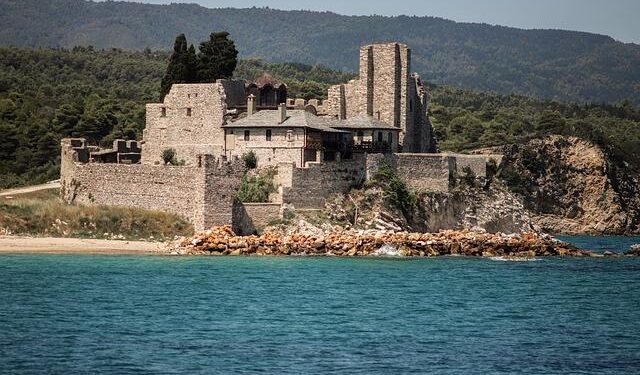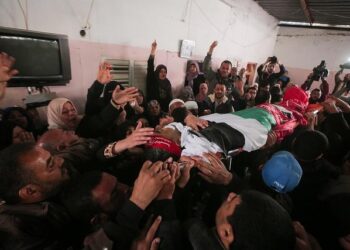Amid escalating tensions in the Balkans, the Serbian Orthodox Church in Kosovo finds itself navigating a precarious landscape marked by political uncertainty and communal discord. Caught “between a rock and a hard place,” the Church faces mounting challenges as it strives to maintain its spiritual and cultural presence in a region fraught with historical grievances and contemporary disputes. This article examines how the Serbian Orthodox community in Kosovo is enduring the current storm, balancing survival with resilience amid an increasingly volatile environment.
Serbian Orthodox Church Navigates Complex Political and Religious Tensions in Kosovo
The Serbian Orthodox Church in Kosovo finds itself at a precarious intersection of faith and politics, grappling with an environment rife with uncertainty and growing tensions. As the historic custodian of numerous medieval monasteries and sacred sites, the Church’s role extends beyond spiritual leadership into the realm of cultural preservation, where it faces constant risks amid ethnic divides and disputed sovereignties. Recent months have seen a marked increase in incidents ranging from property damage to restrictions on religious gatherings, underscoring the volatile context in which the institution operates.
Amid these challenges, the Church has adopted a cautious strategy, focusing on dialogue and resilience rather than confrontation. Key factors shaping its approach include:
- Diplomatic engagement: Maintaining channels with local authorities and international actors to safeguard religious freedoms.
- Community support: Strengthening ties with the Serbian minority and broader Orthodox community to sustain morale.
- Preservation efforts: Protecting ecclesiastical heritage sites through both advocacy and cooperation with cultural organizations.
| Issue | Impact | Response |
|---|---|---|
| Restricted access to monasteries | Heightened community tension | Negotiations with local security forces |
| Vandalism incidents | Damage to cultural heritage | Increased surveillance and international appeals |
| Legal ambiguities | Uncertain status of Church properties | Engagement with legal experts and diplomats |
Preserving Cultural Heritage Amidst Rising Nationalist Pressures
The Serbian Orthodox Church in Kosovo faces a complex battle to maintain its centuries-old heritage amidst escalating nationalist sentiments pushing territorial and cultural claims. As political rhetoric intensifies, many historic monasteries and churches risk neglect or deliberate damage, challenging local and international efforts to safeguard these sacred sites. Preservationists argue that protecting cultural landmarks not only honors religious traditions but serves as a crucial bridge for dialogue between divided communities. However, with nationalist fervor often sidelining heritage concerns, these efforts require nuanced diplomacy and unwavering commitment to cultural pluralism.
Local leaders and international organizations emphasize several strategies to preserve this fragile cultural fabric, including:
- Community Engagement: Empowering grassroots groups to monitor and maintain religious sites.
- Legal Protection: Advocating stronger enforcement of cultural heritage laws within Kosovo’s framework.
- International Oversight: Involving UNESCO and other bodies to provide legitimacy and resources for conservation.
| Challenge | Impact | Proposed Solution |
|---|---|---|
| Rising Nationalist Rhetoric | Increased tensions and risk of vandalism | Dialogue forums and community trust-building |
| Insufficient Funding | Delays in restoration projects | International grants and private sponsorships |
| Legal Ambiguity | Weak enforcement of protection laws | Lobbying for clearer cultural policies |
Calls for International Mediation and Enhanced Protection Measures for Religious Sites
In light of escalating tensions around Serbian Orthodox heritage sites in Kosovo, numerous international voices have urged for immediate diplomatic intervention to prevent further deterioration. Experts emphasize that neutral parties must step in to facilitate dialogue between local authorities and religious communities, aiming to safeguard these vulnerable monuments from becoming flashpoints of conflict. Human rights organizations and cultural preservation groups alike have stressed the urgency of establishing clear protective protocols under international law, pointing out that the current situation not only threatens physical structures but undermines communal coexistence in the region.
A collaborative approach is being proposed, focusing on enhanced security measures, transparent reporting, and community engagement. Suggested actions include:
- Deployment of international peacekeepers at key sites
- Regular monitoring missions with civil society participation
- Educational programs promoting interfaith respect and historical awareness
- Creation of a joint Kosovo-Serbia committee dedicated to religious site preservation
Below is a summary of proposed protective initiatives currently under discussion:
| Initiative | Description | Status |
|---|---|---|
| International Observer Mission | Deploy neutral observers to monitor threats | Under Review |
| Joint Preservation Committee | Binational body ensuring cultural site safety | Proposed |
| Community Dialogue Forums | Facilitate local interfaith discussions | Planning Stage |
| Enhanced Legal Protections | Strengthen penalties for site damages | Drafting Phase |
Closing Remarks
As tensions continue to simmer in Kosovo, the Serbian Orthodox Church remains a steadfast symbol of resilience amid uncertainty. Navigating a complex landscape of political pressure, ethnic divisions, and regional instability, the Church’s leadership and faithful endure, holding onto their heritage while awaiting a resolution to the ongoing storm. The coming months will be crucial in determining whether dialogue and diplomacy can pave the way for coexistence-or if longstanding fault lines will deepen, leaving the Serbian Orthodox community in Kosovo once again caught between a rock and a hard place.
















